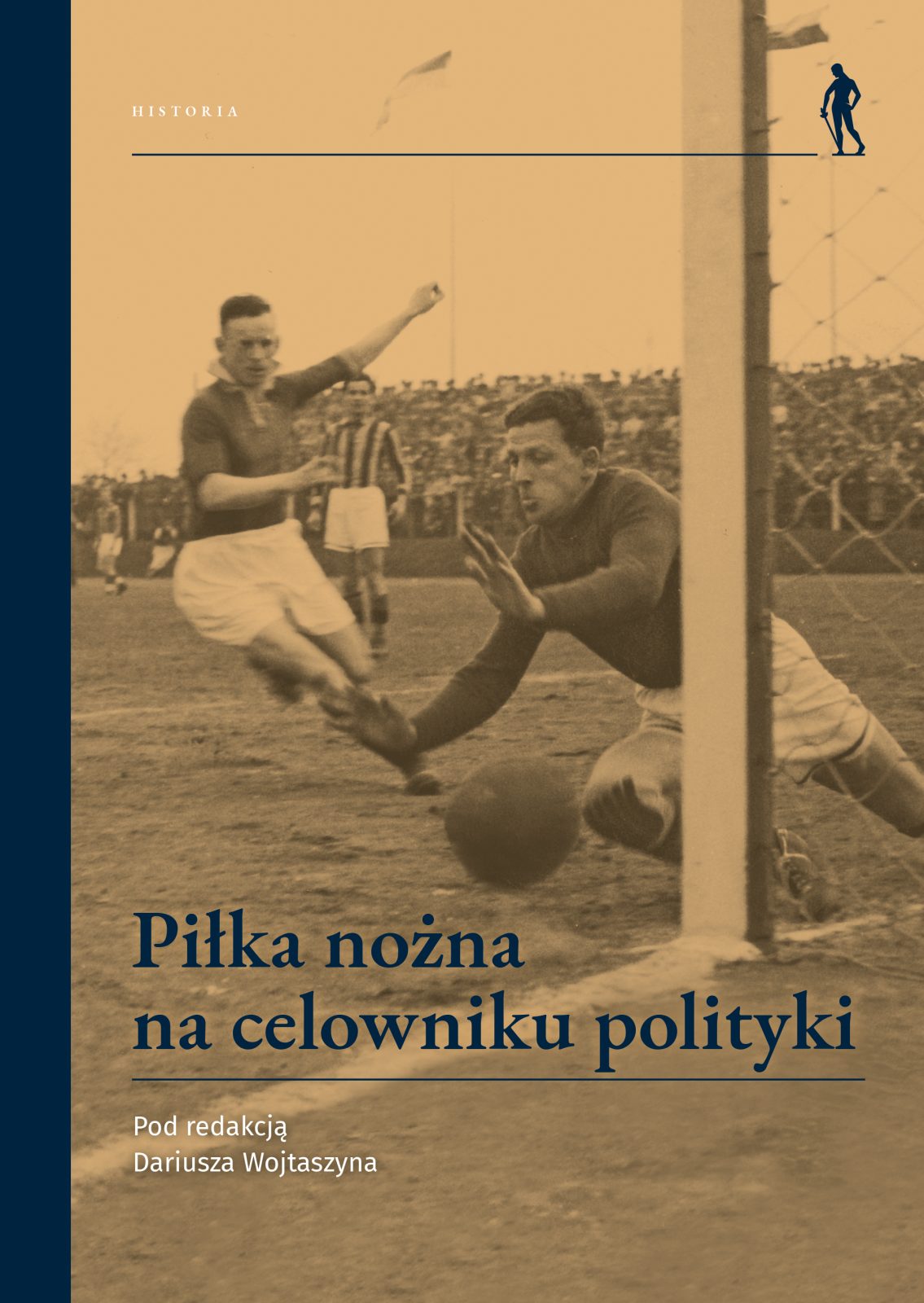
Mondays with WUWr #18
There’s a lot going on at the University of Wrocław Press and we want to keep you informed!
In our series #MondayswithWUWr, we keep you up to date with the most important events, book news and issues important to the Publishing House! We also encourage you to follow the wuwr.eu website and the Publishing House’s social media – Fb, LinkedIn and Instagram.
„Piłka nożna na celowniku polityki. Polska – Niemcy – Europa”
A pre-sale is underway for WUWr’s latest book entitled ‘Piłka nożna na celowniku polityki’, edited by Dariusz Wojtaszyn – historian and political scientist, professor at the Department of Contemporary History and head of the Research Laboratory for the History of German and European Sport at the Willy Brandt Centre for German and European Studies at the University of Wrocław.
Football is the most popular sport in Europe, triggering particularly strong emotions and attracting crowds of fans. The importance of football in the 20th and 21st centuries has led to numerous attempts to politically instrumentalise it. Politicians have sought to exploit and appropriately channel the passions associated with the spectacle of football to achieve desired political or social goals.
As the respected British historian Tony Judt has observed, “What actually united Europe was football”. It played a key role in the development of the continent after the Second World War, but its political significance goes back much earlier. Although the founders of modern sport have always emphasised its apolitical nature, reality has shown that sport and politics are inextricably linked. Thanks to its versatility and growing social influence, football has been an ideal tool for different political systems.
During the period of the two great totalitarianisms of the 20th century, Nazism and Communism, football became — thanks to its integrating and assimilating potential — one of the co-creative elements of the new states emerging in Central Europe. In the already formed states, football was used to strengthen patriotic, sometimes even nationalistic sentiments and to maintain resentment towards rivals.
The volume Football on the Target of Politics contains articles devoted to these problems, occurring at the interface between German football (as issued by West Germany and East Germany), Polish football, Austrian football, Swiss football and Soviet football. Their symbol may be Ernest Wilimowski (on the cover), who played for the Polish national team during the Second Republic and, from 1941, for the German national team. In the former with an eagle, in the latter with a swastika on his chest.
You can buy the book at a special price of PLN 39.00 instead of PLN 59.00 now on the website of the Publishing House by entering the code PRE-SALE in your shopping cart: Piłka nożna na celowniku polityki | Wydawnictwo Uniwersytetu Wrocławskiego (wuwr.eu)
With the code you can also order the book “Johann Jacob Eybelwieser młodszy. Wrocławski malarz doby baroku” at the price of PLN 79.00.
„Śląski kwartalnik historyczny Sobótka” in open access
The latest – 79th volume – No. 2/2024 of the quarterly journal “Sobótka” is now available on the platform Scientific Journals on the Web run by the UWr press.
Tom 79 Nr 2 (2024) | Śląski Kwartalnik Historyczny Sobótka (wuwr.pl)
This issue contains papers presented as part of the panel ‘Nauki pomocnicze historii i źródłoznawstwo historyczne od starożytności do XX wieku oczami młodych badaczy. Teoria – metody badań – perspektywy badawcze’, which was held during the III Congress of Young Science (Gdańsk, 6-8 July 2023). Their subject matter, which is the result of the work of young researchers with specific categories of historical sources, oscillates around medieval copybooks (Kacper Pielat), sfragistic monuments (Jagna Rita Sobel, Paweł Łukasz Krajewski), diaries (Karolina Cholewa), as well as official documentation and the press (Kamil Frączkiewicz, Kamil Burczyński). The issue is supplemented by an edition of documents relating to the suppression of the Poor Clares monasteries in Wrocław and Głogów in 1810, prepared for print by Urszula Bończuk-Dawidziuk and the late Arkadiusz Wojtyła, as well as the traditional sections of the periodical: a scientific chronicle, reviews and a compilation of the latest publications in the field of Silesian history.
In paperback, available from the bookshop: Śląski Kwartalnik Historyczny Sobótka Rocznik LXXIX (2024) nr 2 | Wydawnictwo Uniwersytetu Wrocławskiego (wuwr.eu)
As a reminder that WUWr has been the publisher of the quarterly since 2024, you can find the first issue for 2024 as well as the archive issues on the platform.
Tom 79 Nr 1 (2024) | Śląski Kwartalnik Historyczny Sobótka (wuwr.pl)
In issue 1/2024 of the “Śląski Kwartalnik Historyczny Sobótka”, in the Articles and Material Studies section, you will find five cognitively valuable scientific texts. Kamil Roter presented the views of the distinguished political writer Hugon Kołłątaj from the period of the Duchy of Warsaw. Tomasz Piędzioch has drawn attention to – probably the first after the end of hostilities in 1945 – plans for the reconstruction of Wrocław, which the German architect Otto Seibel created in the Polish Building Department. In an English-language study by Marek Szajda, the fate (and attitudes) of the Jewish population living in Dzierżoniów and Bielawa in the crucial years 1967-1968 is outlined. Maciej Czyż deals with the media image of the emigration of the autochthonous population from Warmia and Mazury in the 1970s. The article by Barbara Techmańska and Karol Sanojca discusses the beginnings of history didactics at the post-war University of Wrocław. In the Source Miscellanea section, Jolanta Szczepańska describes the modern epitaphs and inscriptions related to the von Mettich family, which were located in the Church of the Elevation of the Holy Cross in Moszczanka, while Ewa Grin-Piszczek describes an 18th-century book of estates and provincials of the Dominican convent in Chernelitsa (now in the Ivano-Frankivsk Oblast in Ukraine). The volume could not lack review articles and reviews, as well as a compilation of recent publications in the field of Silesian history.



